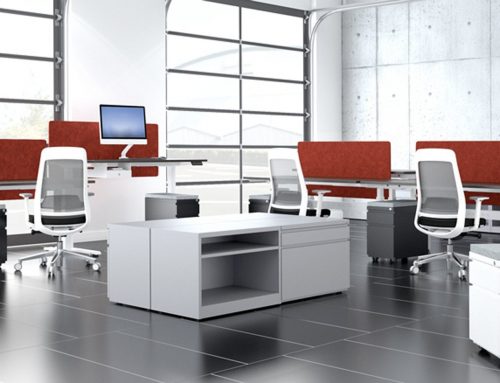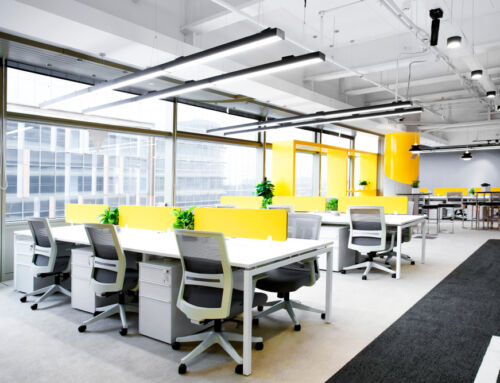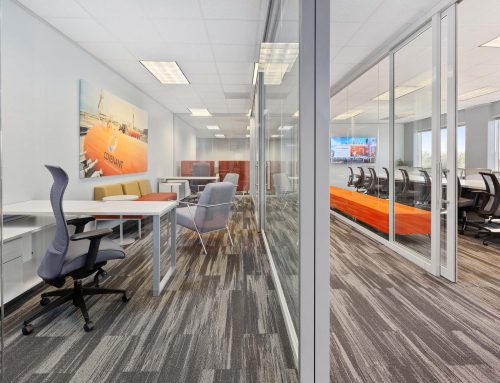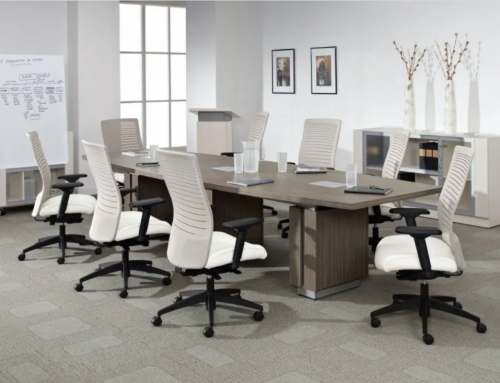Consider These Five Features When Buying a Desk Chair
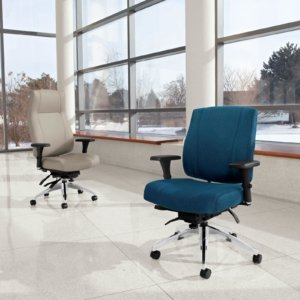
If you were to determine how much time the average office worker spends in their desk chair, you might be surprised. At an average 40 hours a week, they’d sit an approximate 1900 hours over a year. Consider now the average number of years a person works, and it’s plain to see that a large portion of one’s life is spent sitting in an office chair.
Sitting for long periods puts a great amount of pressure on your spine and hip bones, the pressure that your body isn’t designed to handle. How you sit and how you position your workstation can also put a strain on other joints and inhibit proper blood circulation in the limbs and back.
Many ergonomic studies have shown that a supportive office chair can increase productivity and maximize efficiency. A bad office chair can lead to back strain, carpal tunnel, and leg problems, all of which will cause lost time at work.
Despite these facts, many people spend more money when purchasing a desk than a chair.
So, let’s say, hypothetically, I’ve convinced you to pay more attention to your chair. What chair is best? Should you just buy the most expensive? There is no “best” chair for everyone and absolutely no reason to buy the most expensive. Instead, here are the five essential features when choosing an office chair.
Chair Height
What to consider: The height of the seat should be adjustable so your feet can be flat on the ground and your thighs parallel to the floor. When sitting at a workstation, your forearms should be parallel to the surface of your desk as you write or type.
Why it’s important: When a chair is too high, it can put pressure on your leg behind the knee, which can decrease circulation. A chair that is too low can cause the knees to be positioned higher than your hips placing extra pressure on your lower back and hip bones.
Backrest
What to consider: The backrest should allow you to adjust both the height and the angle to support the curvature of your spine and to allow you to recline. If there is a headrest, it should also be adjustable to cradle your head at the base.
Why it’s important: A chair that can adjust to support the spine and recline reduces pressure on the spine and the hip bones while allowing you to reach your work comfortably. Reclining can help alleviate strain on the shoulders, arms, and eyes.
Lumbar Support
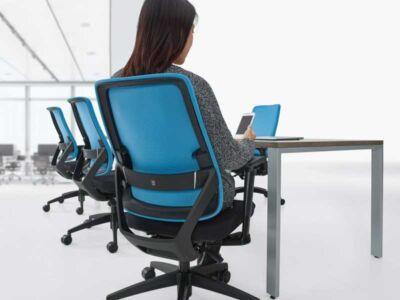 What to consider: A quality, adjustable lumbar support will allow you to control the position of the lumbar support. When adjusted properly, your back will rest comfortably against the backrest, and the lumbar support will mirror the curvature of your spine. Our Sora Fully Adjustable Ergonomic Task Chair is a great example of a chair offering this feature.
What to consider: A quality, adjustable lumbar support will allow you to control the position of the lumbar support. When adjusted properly, your back will rest comfortably against the backrest, and the lumbar support will mirror the curvature of your spine. Our Sora Fully Adjustable Ergonomic Task Chair is a great example of a chair offering this feature.
Why it’s important: Lower back support is likely the most vital element an ergonomic chair can have. Without proper lumbar support, office workers are at significant risk for developing lower back pain. When a chair does not suitably support the lower back, it can result in slouching, which can, over time, cause the curve of the spine to be flattened. In contrast, proper lumbar support helps increase the flow of oxygenated blood to the brain, which helps to keep workers focused and alert.
Seat Depth
What to consider: The seat of your chair should be adjustable forward and backward to accommodate the length of your legs. With your back comfortably against the backrest, you should still have roughly two to three inches of space between the chair’s seat and the back of your knees.
Why it’s important: If the chair seat is too long for your legs, they will be forced to either sit forward losing the support provided by the backrest or to sit with the back of their knees pushed against the seat reducing circulation in the legs.
Armrests
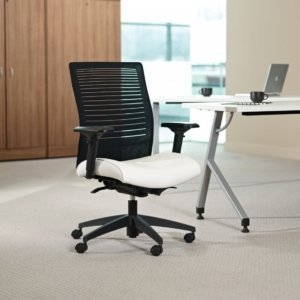 What to look for: Quality armrests should have an adjustable height and the ability to pivot. Your armrests should allow you to rest your arms comfortably on both the armrests themselves and the desktop. Armrests should be adjusted so they are not higher than your elbows when your arms are down so your shoulders do not hunch.
What to look for: Quality armrests should have an adjustable height and the ability to pivot. Your armrests should allow you to rest your arms comfortably on both the armrests themselves and the desktop. Armrests should be adjusted so they are not higher than your elbows when your arms are down so your shoulders do not hunch.
Why it’s important: Armrests which can be repositioned and pivoted provide you better support while working. They also allow you to move them out of the way when you need to move closer to your desk. Look at the Loover Ergonomic Mesh Conference Chair for an example.
Secondary Considerations
Along with these five features, keep in mind that office chairs should function well in their specific environment.
- Wheel base: Almost every office chair has a wheel or castor base; however, if the office floor is carpeted look for an office chair with wheels specifically made for carpet. Rolling helps prevent strain from reaching across a desk.
- Swivel Base: Office chairs should swivel freely to allow for easy access to various parts of the desk. If the chair doesn’t swivel freely, arm strain can result from overextending to reach various items. The ability able to spin your chair around to speak to your co-worker or boss is easier on your neck and back than twisting in your seat.
- Fabric: The chair fabric should be breathable, like a mesh back chair, to prevent the chair from becoming hot and uncomfortable. Additionally, it should have enough cushion that the person sitting in it won’t feel the base of the chair through the cushion.
- Aesthetics: The office chairs you choose can play a significant role in overall office design and culture. Office aesthetics are an important consideration when purchasing office equipment. Companies rely on great office design to reflect their core values and attract top talent. It will also affect clients’ and employees’ perceptions of their workspace and potentially impact productivity.
Durability: Durable chairs require fewer replacements and maintenance and will save money in the long run — even if they come with higher upfront costs.
Trying on Chairs
Office managers should try to have employees try on chairs they intend to purchase before doing so to ensure it fits the employee well. It is essential to experience how a chair will feel to make an informed purchase. Try a variety of chairs if you can so employees can try them out and decide which one works best.
